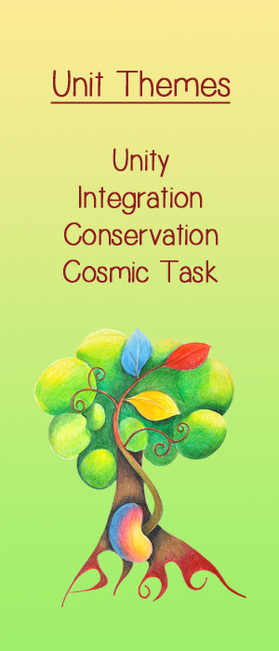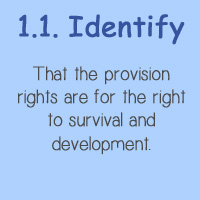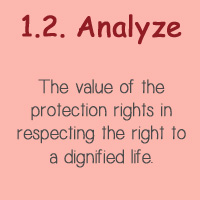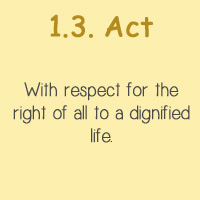Classroom Learning Activities
1. Protection Rights
Use this material to review and expand on the Convention's Protection Rights including: Love & Care, Work, Special Needs, and Peace. This material is available for purchase here.
Use this material to review and expand on the Convention's Protection Rights including: Love & Care, Work, Special Needs, and Peace. This material is available for purchase here.
|
Material Includes:
Presentation Method:
|
Relevant Convention Articles
Article 1
For the purposes of the present Convention, a child means every human being below the age of eighteen years unless under the law applicable to the child, majority is attained earlier.
Article 3
1. In all actions concerning children, whether undertaken by public or private social welfare institutions, courts of law, administrative authorities or legislative bodies, the best interests of the child shall be a primary consideration.
2. States Parties undertake to ensure the child such protection and care as is necessary for his or her well-being, taking into account the rights and duties of his or her parents, legal guardians, or other individuals legally responsible for him or her, and, to this end, shall take all appropriate legislative and administrative measures.
3. States Parties shall ensure that the institutions, services and facilities responsible for the care or protection of children shall conform with the standards established by competent authorities, particularly in the areas of safety, health, in the number and suitability of their staff, as well as competent supervision.
Article 6
1. States Parties recognize that every child has the inherent right to life.
2. States Parties shall ensure to the maximum extent possible the survival and development of the child.
Article 32
1. States Parties recognize the right of the child to be protected from economic exploitation and from performing any work that is likely to be hazardous or to interfere with the child's education, or to be harmful to the child's health or physical, mental, spiritual, moral or social development.
2. States Parties shall take legislative, administrative, social and educational measures to ensure the implementation of the present article. To this end, and having regard to the relevant provisions of other international instruments, States Parties shall in particular:
(a) Provide for a minimum age or minimum ages for admission to employment;
(b) Provide for appropriate regulation of the hours and conditions of employment;
(c) Provide for appropriate penalties or other sanctions to ensure the effective enforcement of the present article.
Article 33
States Parties shall take all appropriate measures, including legislative, administrative, social and educational measures, to protect children from the illicit use of narcotic drugs and psychotropic substances as defined in the relevant international treaties, and to prevent the use of children in the illicit production and trafficking of such substances.
Article 34
States Parties undertake to protect the child from all forms of sexual exploitation and sexual abuse. For these purposes, States Parties shall in particular take all appropriate national, bilateral and multilateral measures to prevent:
(a) The inducement or coercion of a child to engage in any unlawful sexual activity;
(b) The exploitative use of children in prostitution or other unlawful sexual practices;
(c) The exploitative use of children in pornographic performances and materials.
Article 35
States Parties shall take all appropriate national, bilateral and multilateral measures to prevent the abduction of, the sale of or traffic in children for any purpose or in any form.
Article 36
States Parties shall protect the child against all other forms of exploitation prejudicial to any aspects of the child's welfare.
For the purposes of the present Convention, a child means every human being below the age of eighteen years unless under the law applicable to the child, majority is attained earlier.
Article 3
1. In all actions concerning children, whether undertaken by public or private social welfare institutions, courts of law, administrative authorities or legislative bodies, the best interests of the child shall be a primary consideration.
2. States Parties undertake to ensure the child such protection and care as is necessary for his or her well-being, taking into account the rights and duties of his or her parents, legal guardians, or other individuals legally responsible for him or her, and, to this end, shall take all appropriate legislative and administrative measures.
3. States Parties shall ensure that the institutions, services and facilities responsible for the care or protection of children shall conform with the standards established by competent authorities, particularly in the areas of safety, health, in the number and suitability of their staff, as well as competent supervision.
Article 6
1. States Parties recognize that every child has the inherent right to life.
2. States Parties shall ensure to the maximum extent possible the survival and development of the child.
Article 32
1. States Parties recognize the right of the child to be protected from economic exploitation and from performing any work that is likely to be hazardous or to interfere with the child's education, or to be harmful to the child's health or physical, mental, spiritual, moral or social development.
2. States Parties shall take legislative, administrative, social and educational measures to ensure the implementation of the present article. To this end, and having regard to the relevant provisions of other international instruments, States Parties shall in particular:
(a) Provide for a minimum age or minimum ages for admission to employment;
(b) Provide for appropriate regulation of the hours and conditions of employment;
(c) Provide for appropriate penalties or other sanctions to ensure the effective enforcement of the present article.
Article 33
States Parties shall take all appropriate measures, including legislative, administrative, social and educational measures, to protect children from the illicit use of narcotic drugs and psychotropic substances as defined in the relevant international treaties, and to prevent the use of children in the illicit production and trafficking of such substances.
Article 34
States Parties undertake to protect the child from all forms of sexual exploitation and sexual abuse. For these purposes, States Parties shall in particular take all appropriate national, bilateral and multilateral measures to prevent:
(a) The inducement or coercion of a child to engage in any unlawful sexual activity;
(b) The exploitative use of children in prostitution or other unlawful sexual practices;
(c) The exploitative use of children in pornographic performances and materials.
Article 35
States Parties shall take all appropriate national, bilateral and multilateral measures to prevent the abduction of, the sale of or traffic in children for any purpose or in any form.
Article 36
States Parties shall protect the child against all other forms of exploitation prejudicial to any aspects of the child's welfare.
Online Resources and References
- American Montessori Society (2002). Montessori Elementary I Different: What Children Study, What Children Do. Also see Montessori Terminology.
- Duffy, D Neil, and Duffy, Michael (2002). Children of the Universe: Cosmic Education in the Montessori Elementary Classroom. Hollidaysburg, PA: Parent Child Press.
- Education International - Peace Education.
- Education Revolution - The Montessori Educational Vision.
- Humanium Help the Children - Right to Life: Understanding children's right to life.
- Ireland Department of Health and Children - The Agenda for Children's Services: A Policy Handbook.
- Miller, John P. and Yoshiharu Nakagawa. (2002). Nourishing the Spiritual Embryo: The Educational Vision of Maria Montessori. Nurturing Our Wholeness: Perspectives on Spirituality in Education. Retrieved from http://www.pathsoflearning.net/articles_Montessori.php.
- Montessori, Mario M. Jr. (1976). Education for Human Development: Understanding Montessori. New York: Schocken Books, NY.
- North American Montessori Center - Montessori Teacher Training: The Purpose of Montessori Cosmic Education.
- Stern, Rebecca. (2006). The Child's Right to Participation - Reality or Rhetoric? Department of Law, Uppsala University, Sweden. Retrieved from http://uu.diva-portal.org/smash/get/diva2:168647/FULLTEXT01.
- UNICEF - The Convention on the Rights of the Child: Survival and developmental rights: the basic rights to life, survival and development of one's full potential.







